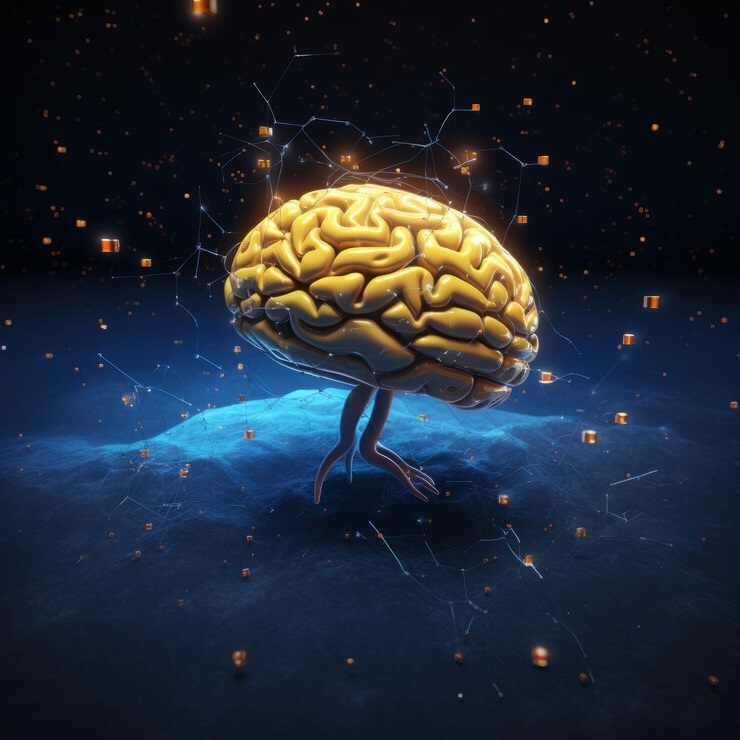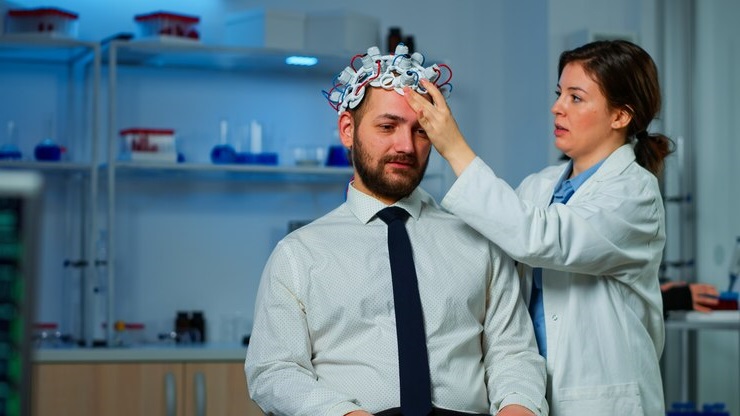
The human brain is an incredibly complex organ that is responsible for controlling all of our thoughts, emotions, and actions. It is made up of billions of neurons, which are specialized cells that transmit information throughout the brain and body. These neurons work together to form intricate networks that allow us to think, learn, and remember. Understanding how the brain functions and how to optimize its capacity is a topic of great interest and research.
One of the key functions of the brain is its ability to build and store memories. Memories are formed when neurons communicate with each other and create new connections, known as synapses. These connections strengthen over time, allowing us to recall information and experiences. The brain has the remarkable ability to adapt and reorganize itself, a concept known as neuroplasticity. This means that the brain can change its structure and function in response to learning, experience, and injury.
The complexity of the human brain
The human brain is often referred to as the most complex organ in the body. It is made up of approximately 86 billion neurons, each with its own unique structure and function. These neurons are connected by trillions of synapses, forming a vast network that allows for the transmission of electrical and chemical signals. This intricate network is what enables the brain to process information, make decisions, and control our actions.
Within the brain, there are different regions that are responsible for specific functions. For example, the frontal lobe is involved in decision-making and problem-solving, while the temporal lobe is responsible for processing auditory information. These regions work together in a highly coordinated manner to ensure that our brain functions optimally.
The role of neurons in brain function
Neurons are the building blocks of the brain and are responsible for transmitting information through electrical and chemical signals. They have a unique structure that allows them to communicate with other neurons. Each neuron consists of a cell body, dendrites, and an axon.
The cell body contains the nucleus, which houses the genetic material of the neuron. The dendrites are branch-like structures that receive signals from other neurons, while the axon is a long, slender projection that transmits signals to other neurons. The axon is covered by a fatty substance called myelin, which helps to speed up the transmission of signals.
When a neuron receives a signal from another neuron, it generates an electrical impulse called an action potential. This action potential travels down the axon and triggers the release of neurotransmitters, which are chemical messengers that allow the signal to be transmitted to the next neuron. This process of electrical and chemical signaling is what allows information to be processed and transmitted throughout the brain.
The brain’s ability to build and store memories
One of the most fascinating aspects of the brain is its ability to build and store memories. Memories are formed when neurons communicate with each other and create new connections, known as synapses. These connections strengthen over time, allowing us to recall information and experiences.
There are different types of memory, including short-term memory and long-term memory. Short-term memory refers to the ability to hold a small amount of information in mind for a short period of time, such as remembering a phone number. Long-term memory, on the other hand, refers to the storage of information over a longer period of time, such as remembering events from childhood.
When we learn something new, such as a new skill or a piece of information, the brain undergoes a process called consolidation. During consolidation, the neural connections that were formed during learning are strengthened, making it easier to retrieve the information later on. This process is thought to involve the release of certain chemicals in the brain, such as dopamine and serotonin.
Neuroplasticity and its impact on brain adaptability
Neuroplasticity is the brain’s ability to reorganize and adapt in response to learning, experience, and injury. It allows the brain to change its structure and function, forming new connections between neurons and strengthening existing ones.
Neuroplasticity is a lifelong process that occurs in all areas of the brain. It is particularly important during critical periods of development, such as childhood and adolescence, when the brain is highly adaptable and responsive to environmental stimuli.
There are several factors that can influence neuroplasticity, including learning, physical activity, and environmental enrichment. Learning new skills and engaging in challenging activities can promote the growth of new connections between neurons, while physical activity can increase the production of certain chemicals in the brain that support neuroplasticity.
The challenge of calculating the brain’s information storage capacity
One of the most intriguing questions about the brain is how much information it can store. It is difficult to determine the exact capacity of the brain, as it is estimated to be able to store an enormous amount of information.
Some researchers have estimated that the brain’s storage capacity is equivalent to approximately 2.5 petabytes, which is equivalent to 2.5 million gigabytes. To put this into perspective, it has been estimated that the entire internet contains approximately 1.2 zettabytes of data, which is equivalent to 1.2 trillion gigabytes.
However, it is important to note that the brain’s capacity to store information is not solely determined by its size. The way in which information is encoded and stored in the brain is still not fully understood, and it is likely that the brain uses a combination of different strategies to store and retrieve information.
Dispelling the myth of only using 10% of the brain
One of the most persistent myths about the brain is the idea that humans only use 10% of their brain. This myth has been perpetuated in popular culture and has led to the belief that there is untapped potential in the brain that can be unlocked.
However, this myth is completely false. Research has shown that humans use all parts of their brain, although different regions may be more active at different times. Functional magnetic resonance imaging (fMRI) studies have shown that even during rest, the brain is highly active and engaged in various processes.
While it is true that there may be untapped potential in the brain, it is not because we are only using a small percentage of it. Rather, it is because there is still much that we do not know about the brain and its capabilities.
The collaboration between the brain’s left and right hemispheres
The brain is divided into two hemispheres, known as the left hemisphere and the right hemisphere. Each hemisphere has its own unique functions, but they work together in a highly coordinated manner to ensure that our brain functions optimally.
The left hemisphere is often referred to as the analytical hemisphere, as it is involved in logical thinking, language processing, and mathematical reasoning. It is responsible for tasks such as reading, writing, and solving problems.
The right hemisphere, on the other hand, is often referred to as the creative hemisphere, as it is involved in artistic and creative processes. It is responsible for tasks such as visual-spatial processing, recognizing faces, and interpreting emotions.
While the left and right hemispheres have different functions, they are connected by a bundle of fibers called the corpus callosum. This allows for communication and coordination between the two hemispheres, ensuring that information is shared and processed efficiently.
Tips for improving cognitive function and memory capacity
While the brain’s capacity and function are largely determined by genetics and biology, there are several things that we can do to improve and maintain cognitive function and memory capacity.
Continuous learning and reading
Engaging in continuous learning and reading is one of the best ways to keep the brain active and stimulate cognitive function. Learning new skills, taking up a new hobby, or reading books on a variety of topics can help to build new neural connections and strengthen existing ones.
Reading is particularly beneficial for the brain, as it requires the integration of multiple cognitive processes, such as attention, memory, and language processing. It also exposes the brain to new ideas and perspectives, which can help to broaden our understanding of the world.
The importance of sleep and brain-stimulating activities
Getting enough sleep is essential for optimal brain function. During sleep, the brain consolidates memories and processes information, allowing for better retention and recall. Lack of sleep can impair cognitive function and memory capacity, so it is important to prioritize sleep and establish a regular sleep schedule.
In addition to sleep, engaging in brain-stimulating activities can help to improve cognitive function and memory capacity. Activities such as puzzles, crosswords, and brain-training games can challenge the brain and promote the growth of new neural connections.
Practicing positive affirmations and exercising
Positive affirmations can have a powerful impact on the brain. By repeating positive statements to ourselves, we can rewire our brain and change our thought patterns. This can help to improve cognitive function and memory capacity, as well as boost overall mental well-being.
Exercise is also beneficial for the brain. Physical activity increases blood flow to the brain, delivering oxygen and nutrients that are essential for optimal brain function. It also stimulates the release of certain chemicals in the brain, such as endorphins, which can improve mood and cognitive function.
Staying socially active and being creative
Staying socially active and maintaining strong social connections is important for brain health. Social interaction stimulates the brain and can help to improve cognitive function and memory capacity. Engaging in activities with others, such as group discussions or team sports, can provide mental stimulation and promote brain health.
Being creative is another way to stimulate the brain and improve cognitive function. Engaging in activities such as painting, writing, or playing a musical instrument can help to activate different areas of the brain and promote the growth of new neural connections.
Creating a conducive environment and tapping into the ultradian rhythm
Creating a conducive environment for learning and productivity can also help to improve cognitive function and memory capacity. This includes minimizing distractions, organizing your workspace, and creating a routine that allows for focused and uninterrupted work.
Tapping into the ultradian rhythm, which is a natural cycle of rest and activity that occurs throughout the day, can also help to optimize brain function. Taking regular breaks and engaging in activities that promote relaxation, such as meditation or deep breathing exercises, can help to recharge the brain and improve cognitive performance.
In conclusion, the human brain is an incredibly complex organ with a remarkable capacity for learning, memory, and adaptation. While the exact capacity of the brain is difficult to determine, it is clear that the brain has more space than any human could use in a lifetime. By understanding how the brain functions and implementing strategies to optimize its capacity, we can improve cognitive function and memory capacity, leading to a more fulfilling and productive life.





